PARKGATE
Grid Ref: SJ 278 781
11 July 2005
 |
|
 |
| View north west along the Parade |
|
St. Thomas's Church |
 |
|
 |
| View from the edge of the marsh |
|
'The Lobster Grill' |
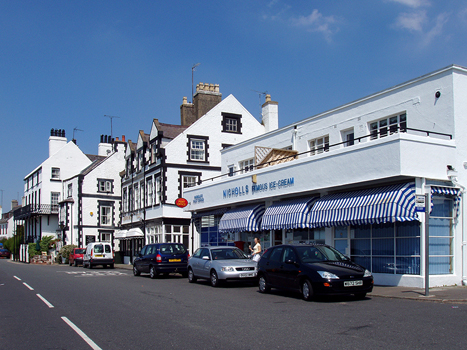 |
|
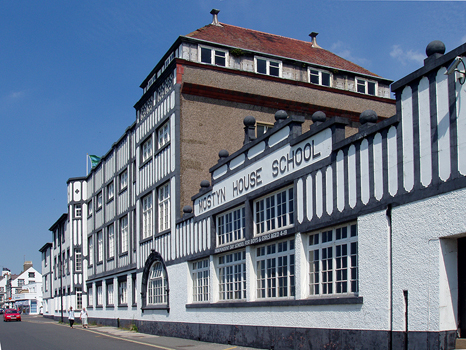 |
| Ice Cream Emporium |
|
Mostyn House School |
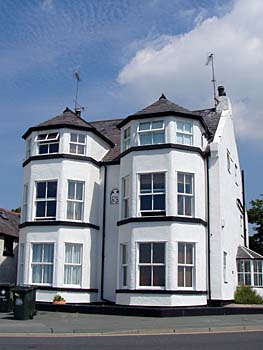 |
|
 |
| Dated 1727 |
|
Cottages opposite the Old Quay Inn |
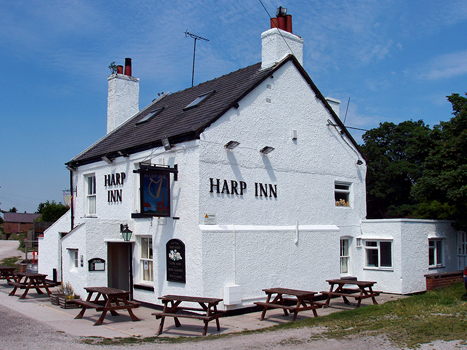 |
|
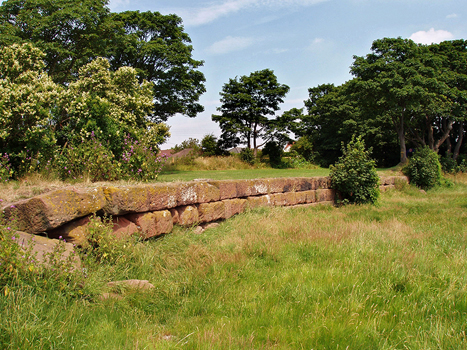 |
| The Harp Inn near Denhall Quay |
|
High and Dry at Denhall Quay (SJ 290 760) |
Parkgate gained prominence as a port for Ireland in the 18th century
as Chester declined in importance from the silting of the Dee. Around 1800 it
was also a fashionable sea-bathing resort. The sandstone church of St. Thomas
was built in 1843 as a Congregationalist Chapel. Mostyn House School is based
in part on a former inn. Behind the section on The Parade is a chapel, started
in 1895.
Waiting for the Sea
By Craig Thornber
"It's all the result of human folly," the proprietor told me.
I was sitting in the Parkgate Coffee Shop, looking out across the vast expanse
of spartina grass covering the Dee estuary.
"Fishing boats used the quay here until the 1940's," she went on,
"but the Liverpool dredgers dropped their loads just off the coast and
it all washed back here."
My informant was a determined lady in her sixties with a shock of white hair
and a green apron. I could tell from the tone of her voice that she would not
forgive the Liverpool Docks and Harbour Company in a hurry.
Perhaps she was a little harsh. The Dee has been silting up for centuries.
In the 18th century, Parkgate was a bustling port. As the terminal for the Irish
packet boat, it saw Handel and Wesley as passengers. Now Parkgate is little
more than a one sided village, stretching the half mile between the Boat House
Restaurant and The Old Quay Inn. It has been abandoned by the sea and the railway.
The trains were withdrawn in the 1960's and now the track is part of the Wirral
Way footpath.
The sea front properties are Georgian, Regency or Victorian. Some are in mock
Tudor half-timbered style and others are painted white. There are no modern
intrusions along the old quay. The windows stare blankly across the marsh towards
the Welsh Coast, watching for the next tide. Along the Parade there are one
or two cafés and restaurants, a newsagent, The Ship Inn, The Red Lion,
and Nicholl's Famous Ice Cream Shop. Nicholl's has won 34 awards for its ice
cream since 1934 and offers fourteen flavours.
Parkgate may have been famous once for its port or for its shrimps, but now
it is celebrated for its ice cream. This is no mere children's delight; there
is little in the area to attract young people. At Parkgate, ice cream is a serious
adult business. Middle-aged and elderly couples park their cars along the Parade,
take a bracing walk, then eat ice cream in their cars. One smart couple were
licking their cornets in a Mercedes convertible. This routine continues at all
seasons with Christmas Day afternoon one of the busiest of the year.
The teenage shop assistants were singularly ill-informed on Parkgate's history.
By contrast, the coffee shop owner was very knowledgeable. She pointed to the
four photographs on the wall.
"Those were taken when I was a girl. The tide came right up to the Parade
every day and when it went out we had a beautiful sandy beach."
I peered at the fading sepia photographs and was struck by the height of the
sea wall above the shore. Now the silt, stabilised by the unfortunate introduction
of a hardy foreign marsh grass, has built up to within a few feet of the road
level. Next to the photographs there was a sign reporting "All staff eager
and enthusiastic. All pigs fed and ready to fly."
When I prompted the proprietor for a little local gossip on Admiral Nelson
and Emma Hamilton she was happy to oblige and gave me a few brief facts before
she retreated to the kitchen. Emma had been born in the nearby village of Ness;
she was the daughter of the village blacksmith, Henry Lyon. It was as the wife
of Lord Hamilton, the British Ambassador to the Court at Naples, that she had
met Nelson. In later life, Emma returned to her native Wirral to be treated for a skin complaint
by bathing in the sea. Parkgate was a popular resort at the beginning of the
19th century. She is believed to have stayed at Dover Cottage opposite The Old
Quay Inn.
About a mile along the coast towards Chester, I stumbled upon The Harp Inn.
It can be reached only down a rough track with pot holes that look as if they
were created by cannon fire. The inn stands close to the long abandoned Denhall
Quay, built of the local dark red sandstone. My first guess was that it had
been a public house for sailors. However, it had been converted from a row of
three cottages into an inn for the benefit of miners at the nearby Wirral Colliery.
The barman pointed to a collier's pick and hammer hung from the beams among
the obligatory set of horse brasses. A collection of miners' lamps hung above
the counter, while over the fireplace I could see a row of pictures of the colliery.
The mine had operated for 170 years. One photograph showed the last shift emerging
from the pit head on its final day. The caption was "Arthur Jones, Dave
Parry, and Cobbler Jim Jones, 1928."
Many towns have sought to commercialise their history or their favourite sons
but Parkgate seems a little reticent about its past. There are no public houses
named for Wesley, Handel, Nelson or Emma Hamilton. While Liverpool and Birkenhead
make theme parks of their heritage, Parkgate waits patiently for the tide. One
day, global warming will melt the ice caps and raise the sea level. Then the
surf will break once more against the Parade. It will all be the result of human
folly.
Researched and written on a weekend writing course at Burton Manor College,
Wirral, in 1997.









